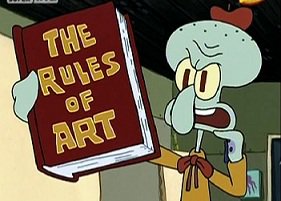Unit 1 was an introduction to the main concepts and components of art which involve methods of learning, ways to characterize and analyze art, and our takes on those works of art. We began the semester by discussing what art meant to us, and how it is part of our lives. I believe art is used to define the creative world around us. For something to be considered “art”, it doesn’t have to be in a museum, nor does it have to be a painting. To me, art can be anything from a film, to a photograph, to graffiti on the walls of New York. If people are able to attach meaning and relate to a creative piece, then it is considered art. Art is also a large part of my life because I love to do photography. I began photography when I was 16 and used a small point and shoot camera. It wasn’t until I began getting more interested in photography that I bought myself an actual DSLR, and began to teach myself how to use it and how to edit. Though I am a little busier now with school, work, and other activities, I still try to go shooting with friends at least twice a week.
We also studied Paulo Friere’s Pedagogy of the Oppressed. In this, Friere discusses how the “banking model” is a form of teaching in which the teacher or educator is only there to feed knowledge to the students, and the students are only there to receive knowledge. It is a one way relationship that empowers the teacher, disempowers the student, and prevents critical and creative thinking. Friere argues that there needs to a balance between the teacher teaching the students, and the students interacting with the teacher. Friere’s “banking model” was also applied to our personal lives with teachers that we’ve had in the past, and how their use of the banking model ended up causing harm to our learning.
Additionally, we discussed formal analysis and how it is used to identify and examine works of art. Through formal analysis, the observer tries to understand the underlying meaning that the artist may have intended for the work of art to have. Some components include color, size and scale, lines, and symbolism. When looking at color, you must pay attention to the types of color schemes and the range used. You must identify whether they are light or dark colors, and whether the colors contrast with one other. When looking at size and scale, you must observe where any subjects or objects in the work are positioned. You also need to note the size of the objects. For example, noting whether the main subject is the largest thing in the work, or if there are things larger than the subject. Lines are a way of identifying the techniques an artist used in a painting. Some parts of a painting may have been painted using stronger strokes or different types of strokes than other parts of a painting. Symbolism is a strong component of formal analysis because it moves away from the physical aspects, and allows the observer to understand what the artist intended on saying, without actually saying it. By inserting specific colors, shapes, or objects, the artist can convey a certain emotion, reaction, or thought without having to write or say anything.


